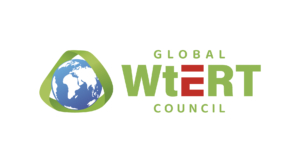M.S. Thesis: Assessment of Waste Management Performance of Companies.
By Ruixin Mao
Advisors: Dr. A.C. (Thanos) Bourtsalas and Prof. Nickolas J. Themelis
Department of Earth and Environmental Engineering
Fu Foundation School of Engineering & Applied Science
Columbia University
December 2018
According to the 2030 Agenda for Sustainable Development Goals (SDGs), a need for improved waste management was highlighted in SDGs 6, 11 and 12. In this context, the EU commission defines the circular economy targets of the member nations as 65% recycling and 35% waste-to-energy. The concept, therefore, is to “move away from landfills”.
Monitoring the progress of companies that are major contributors to the environment and the waste that is generated is key to achieve sustainability. In the past few decades, many indicators have been developed to analyze waste management performance of different companies. In addition, in 2003, Bloomberg introduced the Environmental, Social and Governance (ESG) indicators, that consider other factors than the financial indicators in the decision-making process. However, the ESG indicators do not consider waste management that is an important pillar in the nexus of sustainability.
The Sustainability Accounting Standards Board (SASB) was founded in 2011, with a goal to provide industry-specific metrics with emphasis on the waste management performance. In our analysis, eight industries were selected and assessed from the SASB Materiality Map. The SASB navigator was used to evaluate and rate the waste management performance of several companies in the selected industries were found in the SASB Navigator. The financial performance of the companies was considered, such as revenues and growth rate. Data were obtained from the Bloomberg Terminal. The results are presented as matrices of Revenue VS. Waste Management score and Growth Rate VS. Waste Management score, with the upper right quadrant representing companies with relatively high financial indicators and relatively high waste management performance.
Most leaders in all eight industries are making efforts on moving away from landfills for improving their waste management performance. For example, they initiated projects on higher recycling and reuse rate, on donating unsold food to those in need, and on developing advanced technologies for the recovery of energy from wastes.
Additionally, since waste to energy is essential for sustainable waste management, SASB should consider including landfilling and waste-to-energy as one of the metrics of waste management performance.
